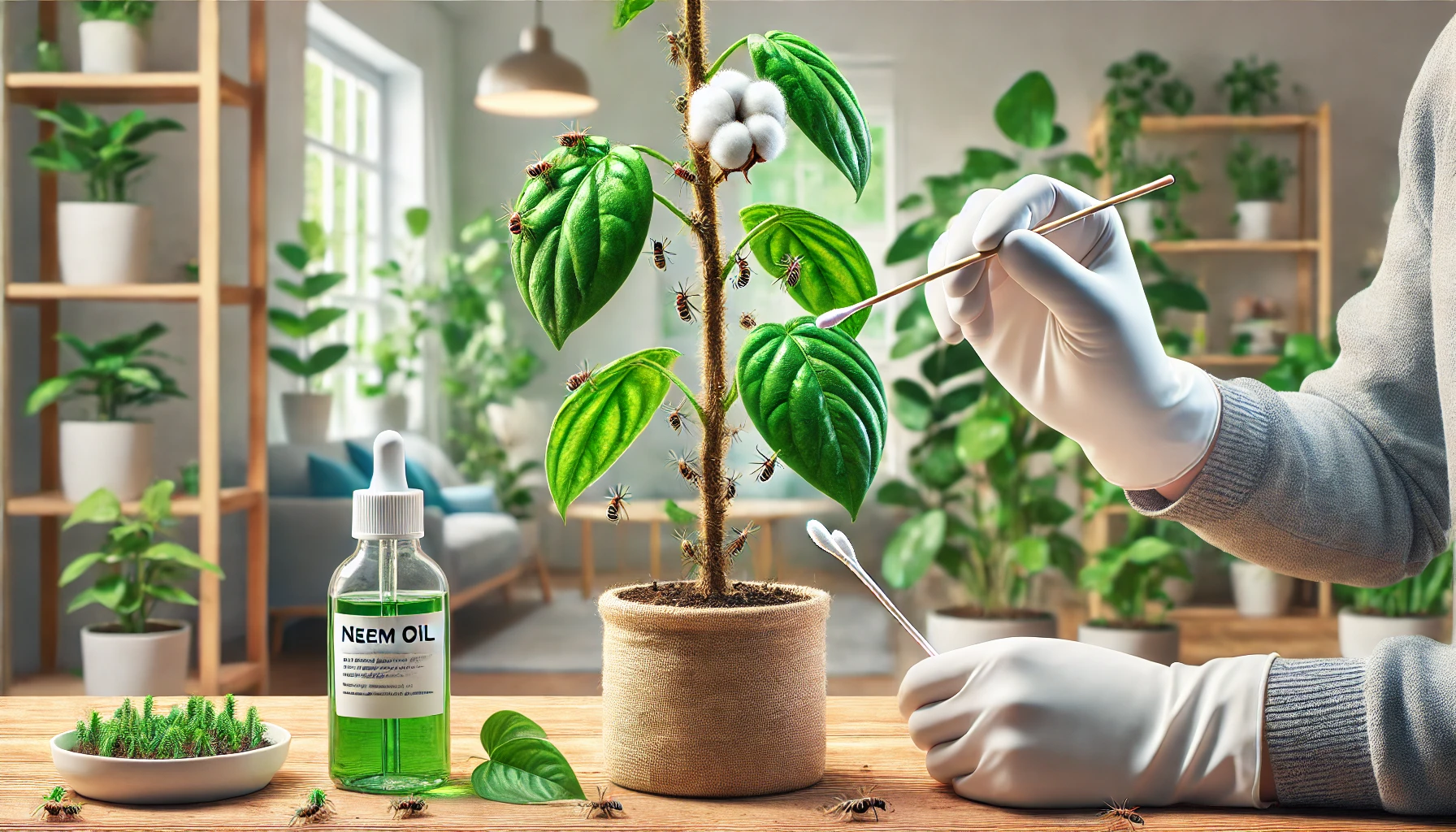Pests are a common challenge for plant enthusiasts, whether you’re growing houseplants or tending to an outdoor garden. Identifying pests early and treating them effectively is crucial to maintaining healthy plants. In this article, we’ll explore the most common plant pests, how to spot them, and natural methods to get rid of them.
Why Do Pests Attack Plants?
Pests are drawn to plants for food, shelter, or reproduction. Healthy plants can often resist mild infestations, but stressed or weak plants are more vulnerable. Regular inspection and proper care are key to preventing serious pest problems.
Common Plant Pests and How to Identify Them
1. Aphids
- Appearance: Small, soft-bodied insects, often green, black, or white, found on new growth or undersides of leaves.
- Damage: Stunted growth, curled leaves, and a sticky residue (honeydew) that attracts ants.
- Treatment: Spray plants with a mix of water and mild soap or neem oil.
2. Mealybugs
- Appearance: White, cotton-like clusters on stems and leaves.
- Damage: Wilting, yellowing leaves, and sticky honeydew.
- Treatment: Dab mealybugs with a cotton swab dipped in rubbing alcohol or use insecticidal soap.
3. Spider Mites
- Appearance: Tiny, red or brown dots that leave fine webbing on leaves.
- Damage: Yellow speckling on leaves and eventual leaf drop.
- Treatment: Increase humidity, rinse plants with water, and apply neem oil.
4. Whiteflies
- Appearance: Small, white, moth-like insects that fly when disturbed.
- Damage: Yellowing leaves, poor growth, and sticky honeydew.
- Treatment: Use yellow sticky traps and spray plants with insecticidal soap.
5. Fungus Gnats
- Appearance: Small, black flies hovering around soil.
- Damage: Larvae feed on roots, causing wilting in young plants.
- Treatment: Allow soil to dry out between waterings and apply beneficial nematodes.
6. Scale Insects
- Appearance: Hard, shell-like bumps on stems and leaves.
- Damage: Yellowing leaves, reduced vigor, and honeydew secretion.
- Treatment: Remove scales manually with a soft brush or apply horticultural oil.
How to Treat Plant Pests Naturally
1. Manual Removal
Use a soft cloth or a cotton swab to remove visible pests. This method works well for small infestations.
2. Neem Oil
Neem oil is a natural insecticide that disrupts pests’ life cycles. Mix with water and spray onto affected areas.
3. Insecticidal Soap
This soap is gentle on plants but effective against pests. Apply it directly to infested areas.
4. Beneficial Insects
Introduce natural predators, such as ladybugs or predatory mites, to control pest populations.
5. Adjust Plant Care
Pests often target stressed plants. Ensure your plants are receiving adequate light, water, and nutrients.
Preventing Pest Infestations
- Inspect New Plants: Check for signs of pests before bringing them home.
- Maintain Cleanliness: Remove dead leaves and debris that attract pests.
- Quarantine Infected Plants: Isolate any infested plants to prevent pests from spreading.
- Monitor Regularly: Check your plants weekly for early signs of pests.
Conclusion
Pests can be frustrating, but with the right care and treatment, your plants can recover and thrive. By staying vigilant and using natural remedies, you can protect your plants and maintain a healthy garden.

